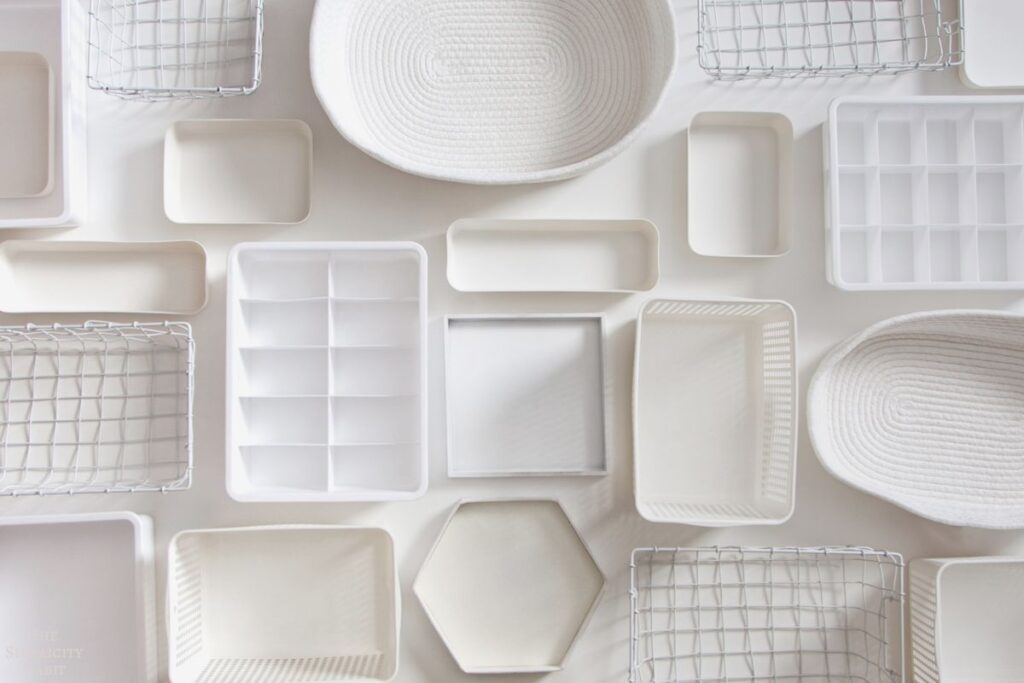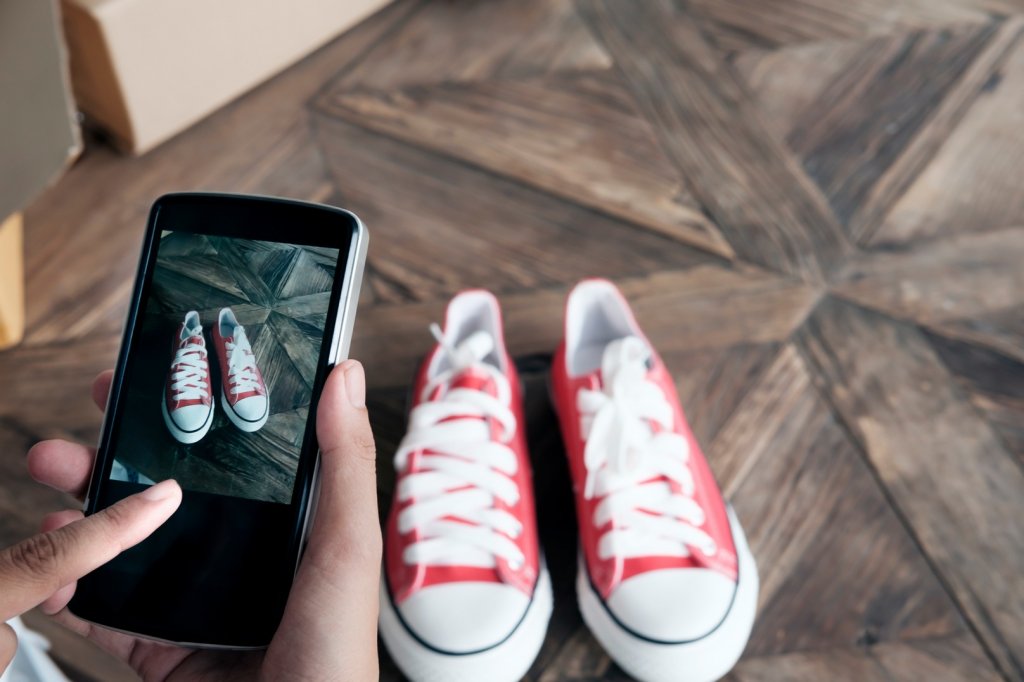Inside: Use these decluttering rules to declutter more effectively and efficiently. These will save you time and help you to stay focused.
Decluttering seems like a simple process, right? Just get rid of the stuff you no longer want. Done.
Except that for most people, it isn’t that simple. There are numerous challenges that can arise from memories and attachment to things to being busy and feeling like you don’t have the time or energy to focus on it.
Thankfully, there are ways to make decluttering a bit easier. By following the decluttering rules in this post you’ll be able to declutter more effectively.
Now, if you’re like me and are adverse to the word ‘rules’, then consider these decluttering tips that will save you time and potential headaches as you work to simplify your stuff.
Use the following decluttering rules to start making more progress with decluttering your home.

Decluttering Rules: The Do’s of Decluttering
A while back I wrote a post about the common decluttering mistakes that people make. While it can be helpful to read all of the things not to do when decluttering, this time I wanted to take a positive spin on it with decluttering rules in the form of do’s, not don’t’s.
If you follow these decluttering rules, you’ll be more efficient in the decluttering process and you’ll reach your simplifying goals more quickly.
1. Create your goals.
Speaking of goals, the first thing to do before you begin decluttering is to create your goals for your home. It’s helpful to have a clear idea of how you want your space to look, feel, and function.
The more clarity you have, the more likely you will be to achieve your vision. Throughout the decluttering process, you may be tempted to keep extra items.
But having a specific goal will help you identify which things support your goals for your home and which ones are preventing you from reaching them.
You get to decide how much is enough and what’s too much. The end goal is to create a space that works for you and your family.
2. Make a plan.
Once you have set your goals for your home, the next decluttering rule is to make a plan. As the saying goes, “if you fail to plan, you plan to fail.”
First, determine your estimated timeline. It’s fine to alter it in the future if needed, but creating some clear mile markers along the way can be very helpful in staying on track.
Decide which areas you’ll start with and what your room-by-room plan will look like.
At the end of this post, you can sign up to receive the free Declutter Plan of Attack to create your customized plan for decluttering your home.

3. Remember that decluttering comes before organizing.
It’s tempting to want to go straight to getting cute baskets or pretty acrylic containers. However, it works better to first assess what you have and declutter the things that are no longer serving you.
In some cases, you may find that you no longer need to buy storage containers as you may be able to repurpose ones you already owned. Work with what you have when possible.
Even if you do end up buying some select containers, eliminating the excess first will give you a clearer idea of what you need. Having less to organize will go a long way in helping you to maintain your space.
4. Work on one small defined area at a time.
Decluttering can feel overwhelming. When you stare at the mountain in front of you it can feel like an insurmountable task.
This is one of the most important decluttering rules. Focus on one small defined area at a time.
Work on one shelf, cabinet, drawer, or surface and complete it before starting another area.
I’ve seen so many people that get excited to declutter so they go all in. The problem is they end up frustrated when they try to bite off more than they can chew and it then stalls their progress.
Focusing on one small defined area at a time makes the process less overwhelming. It also keeps the mess to a minimum which will help you be more motivated to continue decluttering.
If you’re not sure where to start, check out this list of easy areas to declutter that will have a big impact on your home.
5. Understand your tendencies.
There are a number of reasons that people hold onto clutter. It’s helpful to understand why you’ve been hanging onto yours.
Clutter isn’t just about the stuff. It is often more complex than that. When you gain a better understanding of your relationship with the things you own, it becomes a little easier to let go.
Decluttering will give you insights into your behaviors as you gain clarity on how you acquired the items to begin with and why you continued to keep them. In the process, you learn how to do things differently going forward.

6. Allow your space to limit what you keep.
Both the storage containers you choose and the space you live in can help guide you not to keep more than you should. If the things you own don’t fit in their designated space, it’s time to evaluate if you have too much stuff (if you’re asking this question, you likely do).
Your cabinets, drawers, and shelves act as a boundary. If your things are overflowing into additional rooms or spaces, that’s an indicator that you need to cut back on the number of things you have.
If you’re teaching your kids to declutter, this rule is a helpful tool in limiting the amount of stuff that they keep.
7. Focus on your own stuff.
It’s tempting when you start decluttering to want to declutter other people’s things. After all, it’s clear to you that your spouse and kids have a lot of excess stuff, right?
However, that is not a great way to get your family on board with decluttering. Start by focusing on your things.
It can be a challenge to declutter when your spouse doesn’t want to, but by setting the example and going first they might decide to join you. But even if they don’t, you can take control of the things that are yours to simplify what you can.
8. Complete the process.
When you’re done working in one area, complete that process. That means putting the items that belong in other spaces back where they go.
It also means getting the items you’ve decluttered out of your house. You can either drop them off at a local donation center or list them on your local Buy Nothing page.
You will be able to enjoy the full benefits of having a decluttered space once you have completed the process by removing the excess things from your home.

9. Set a time limit on selling.
Want to try your hand at selling your unwanted items? There are some things you should consider if you want to sell your things.
One important tip is to set a time limit on the things you’re trying to sell. This will keep you from holding onto unwanted items for an excessive period of time.
Price your items well and be willing to lower the price if it doesn’t sell quickly. It can also help to list them on multiple local Facebook buy and sell groups or on an additional platform, such as OfferUp.
While it’s nice to make some money back from your things, it does take additional time and effort. If you prefer to just donate your things instead, that’s great too.
10. Practice, practice, practice.
Often the biggest challenge with decluttering is getting started. But once you’ve begun, it becomes a little bit easier to make decisions each time.
With practice comes additional confidence and clarity in what you want in your home going forward.
You don’t have to have a lot of time on your hands to continue making progress. Some decluttering tasks can be done in as little as 5 minutes.
Progress begets progress so the more you practice, the more motivated you’ll be to continue and the closer you will get to achieving your simplifying goals.
11. Be realistic.
When deciding if things should stay or go there is a tendency to suddenly come up with many options for how you might need this item in the future and why you’d regret getting rid of it.
Are you keeping ‘what if’ or ‘someday’ items? You may want to rethink continuing to hold onto things for hypothetical scenarios.
Be realistic on the true likelihood if you will need the item in the future (hint: if you haven’t used it in years, odds are good you won’t need it in the future either).
Trust your gut. If you’re feeling really conflicted about it, give it another three or six months to revisit it again. Time has a way of showing us what’s become unnecessary.

12. Accept past mistakes, learn from them, and move on.
It’s tough to declutter things that you spent a lot of money on. It can be even harder when you regret buying that item and feel like you never got the use you thought you would out of it.
Unfortunately, there is no going back in time. The best you can do at this point is learn the lessons and make different decisions going forward by being more intentional with shopping.
Guilt and regret will get in your way in the decluttering process. Let go of what was and use your experiences to guide your choices from here on out.
13. Minimize duplicates.
Some minimalists will suggest getting rid of most duplicates. I’m not a minimalist, so my decluttering rule is to minimize duplicates when possible.
You’ve already spent the money on the things you own so getting rid of all of your back up items can be wasteful in some cases. Use up what you have and then make use of your backups too.
But if you have more of a type of item than you’d ever want or need, declutter the excess. You likely don’t need five spatulas so keep your favorites and let go of the rest.
Be practical with what you decide to keep and make sure you’re only keeping things you’ll use.
14. Assign a home for everything.
Once you’ve decluttered your space, it’s important to have a place where everything goes. This will help you to maintain your home and keep it organized.
It may take a little time for family members to adjust and learn where things belong, but it’s worth teaching everyone to help keep things picked up.
Then there’s no excuse for things continuing to float around to different surfaces in the home. It has a place to go when it’s done being used.

15. Commit to the process.
A key to your decluttering success is committing to the process. Decluttering may not always feel fun or easy, but when you commit to doing the work it will help you continue to make strides in the right direction.
Consistency will have a big impact on the progress you make. Even if you don’t have extended periods of time in your schedule to work on it, those little projects will all add up.
Get a friend or family member to help keep you accountable. You’re more likely to reach your goals when you have someone else checking in with you on your efforts.
16. Have fun & celebrate your wins.
Decluttering doesn’t have to feel like a drag. Make it more fun by pairing it with music you love or an audiobook or podcast you’ve been wanting to listen to.
If you need a bit more motivation to continue decluttering, determine in advance some ways you’ll celebrate after accomplishing particular tasks.
Celebrating your wins acknowledges the progress you’re making and helps to encourage you to stick with it.
Be proud of how far you’ve come.
17. Be in a good place emotionally.
Decluttering can be emotional. Being in the proper declutter mindset before starting will help you to make decisions more quickly.
Rage purging or decluttering after loss (when you aren’t ready) can end in regret and make the process more challenging.
When you’re in a good place emotionally, you’ll be able to think more clearly and make decisions that you feel comfortable with.

18. Be patient.
Remember that it took you years to accumulate the things in your home. It’s ok if it takes you a while to sort through it.
One of the most important decluttering rules is to be patient and have grace with yourself throughout the decluttering process.
Life happens and you may need to take extended breaks. That’s ok too. Just get back to it when you’re able.
Stay focused on your goals and keep making those small steps. Don’t compare your progress with anyone else’s. This journey is yours and yours alone.
19. Change your habits.
In order to maintain your newly simplified space, it’s important to develop decluttering habits.
The key to stopping the cycle of clutter in your home is to examine your daily habits as well as your shopping habits.
Put things away when you’re done with them. Do a quick clean up at the end of the day to clear off flat surfaces and ensure things were put back where they belong.
Notice where clutter is coming from and do what you can to slow the inflow. Making these changes will make a big difference in your home.
20. Review and reassess as needed.
The final one of the decluttering rules is to review and reassess periodically. Doing a monthly or seasonal declutter is a great way to prevent clutter from creeping into your home.
By keeping an eye on the amount of stuff in your home and fine tuning things as needed you can maintain the progress you’ve made in simplifying your space.
These decluttering rules will help you to declutter more effectively as well as keep the clutter from coming back.
What decluttering rules do you plan to implement first? Let us know in the comments section.
Sign up on the form below to get weekly decluttering and simplifying inspiration sent straight to your inbox! You’ll also get the free Declutter Plan of Attack Worksheet to help you customize your own decluttering plan for your home.
window.fd(‘form’, {
formId: ‘5e2131045581900027293fde’,
containerEl: document.querySelector(‘#fd-form-5e2131045581900027293fde’)
});
The post 20 Decluttering Rules to Help You Declutter More Effectively appeared first on The Simplicity Habit.

